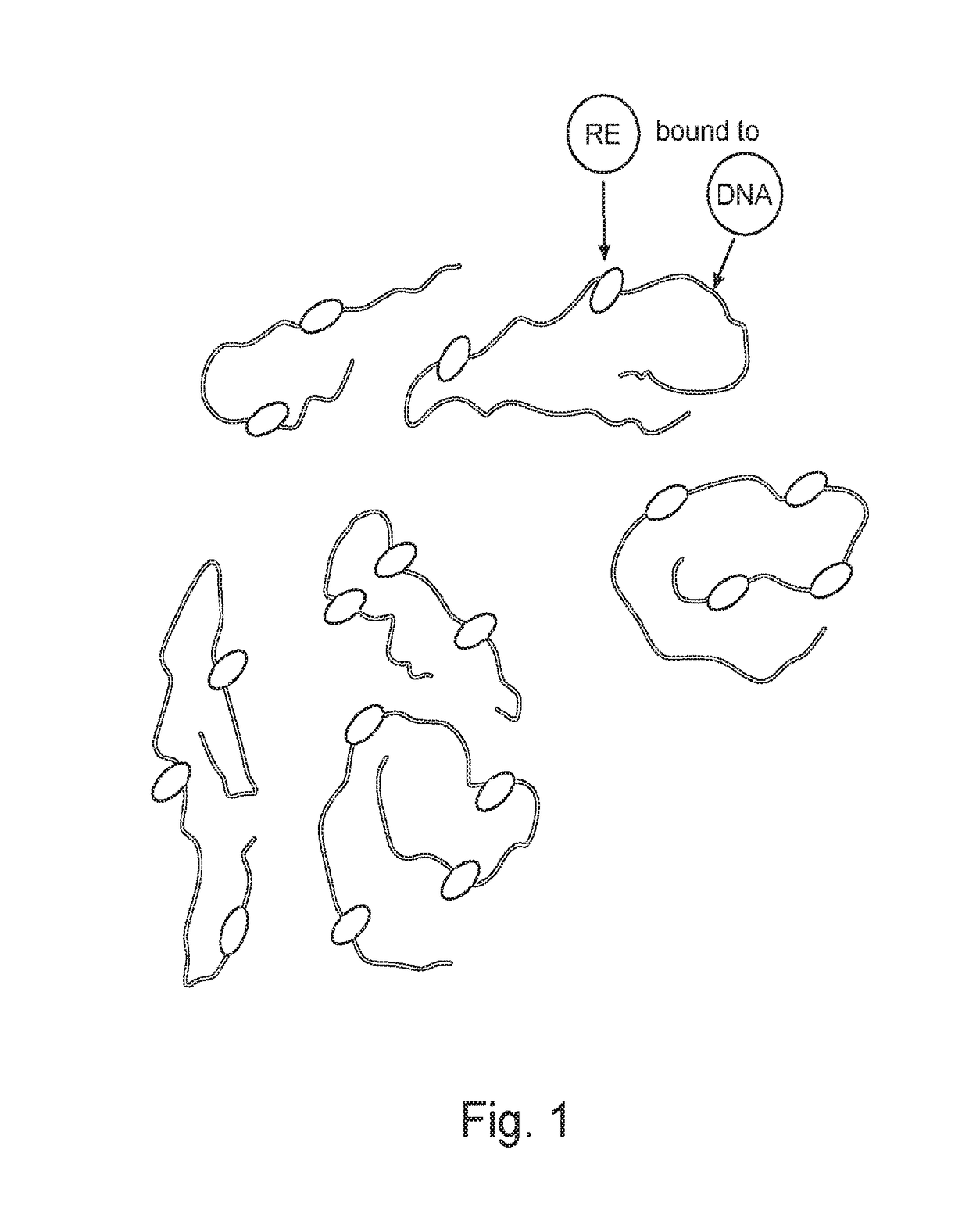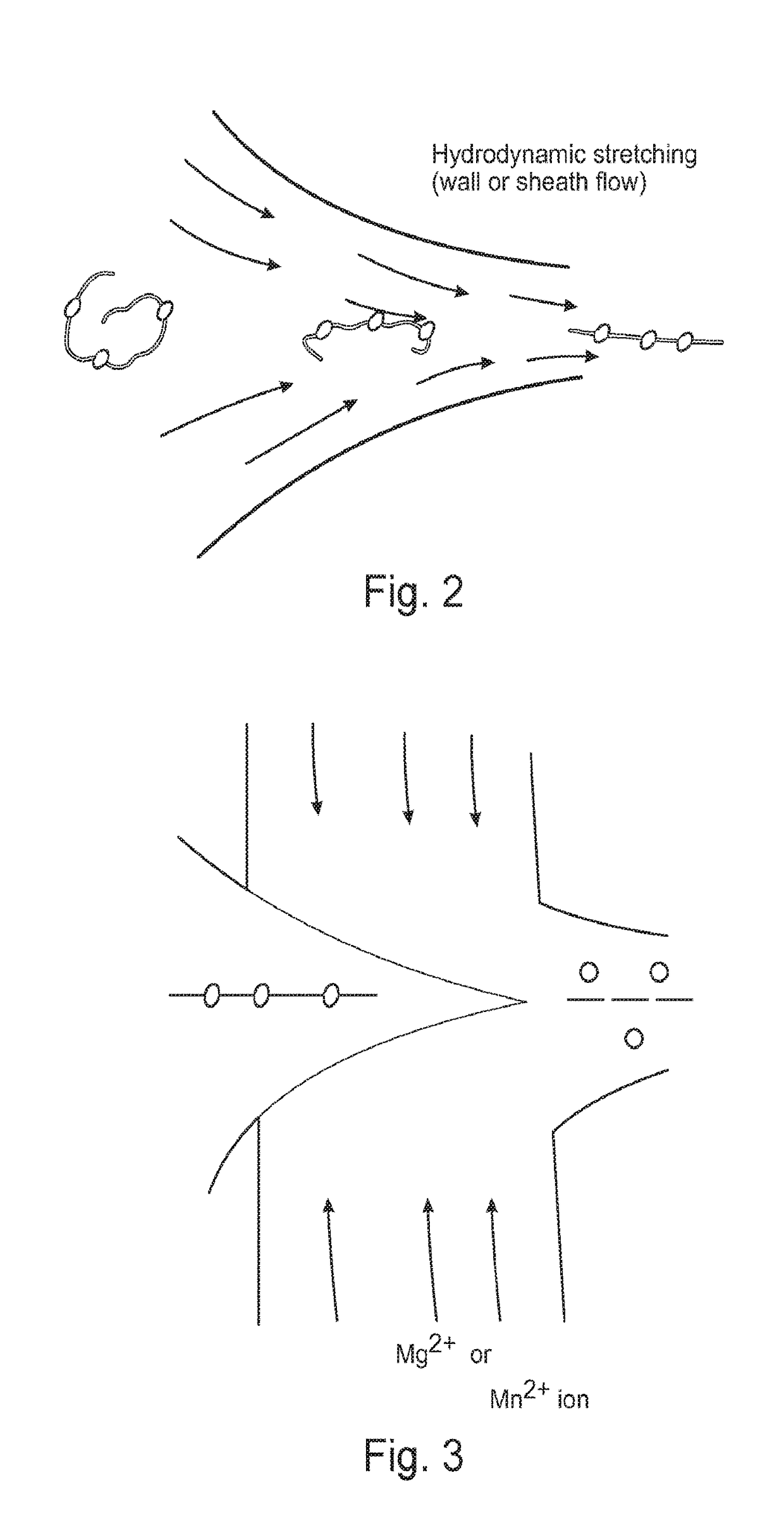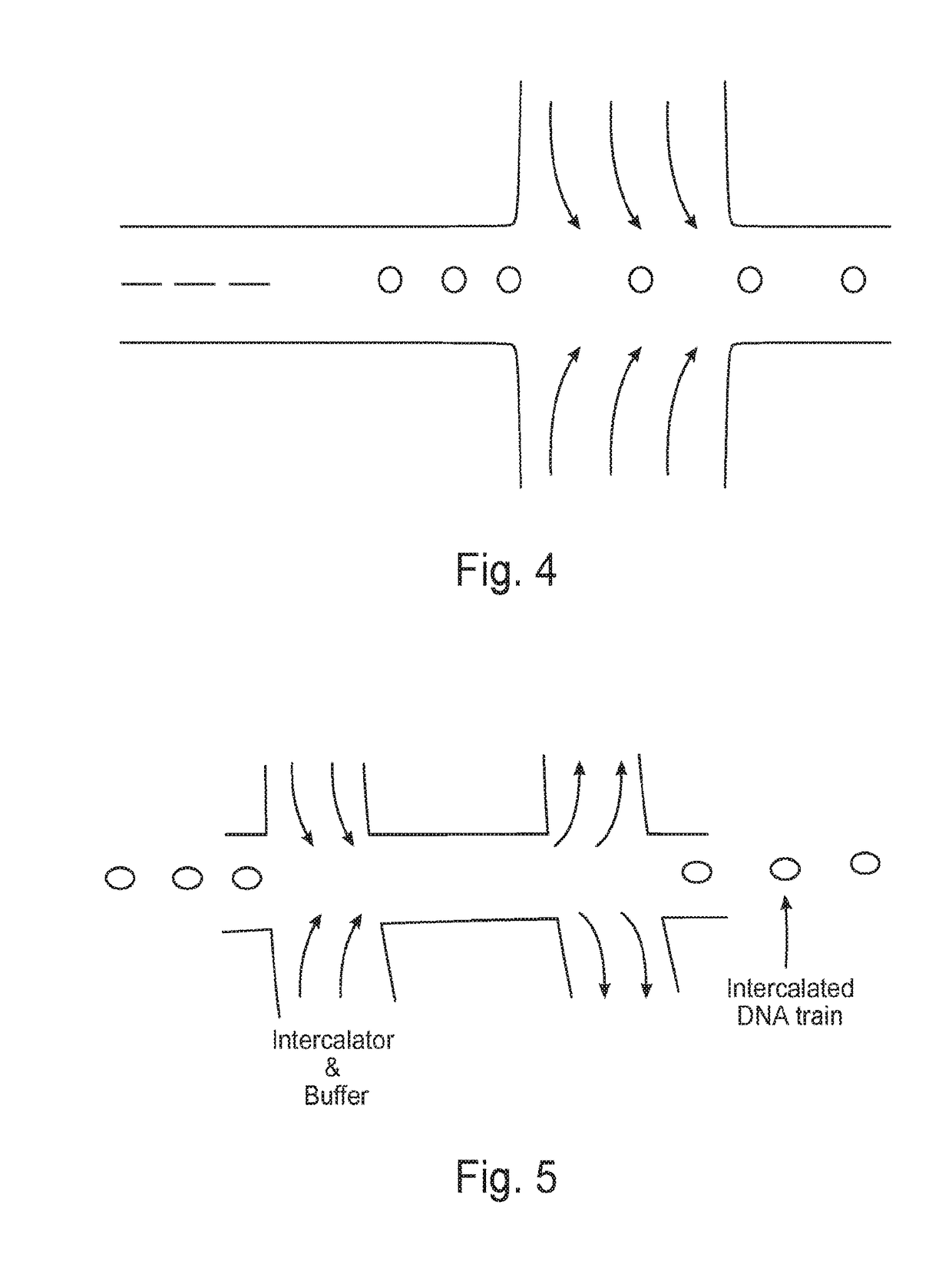Methods for nucleic acid identification
a nucleic acid and identification method technology, applied in the field of nucleic acid identification, can solve the problems of high labor intensity, inability to achieve the required strain typing accuracy, and inability to handle complex mixtures of pathogens, etc., and achieve the effect of facilitating the analysis of samples and increasing the ra
- Summary
- Abstract
- Description
- Claims
- Application Information
AI Technical Summary
Benefits of technology
Problems solved by technology
Method used
Image
Examples
example 1
nd Cutting Conditions
[0088]Lambda DNA and RE were mixed in binding (only) buffer conditions (i.e., 50 mM Potassium Acetate, 20 mM Tris-acetate, 10 mM Calcium Acetate, 100 μg / ml BSA, and has a pH 7.9 at 25° C.). FIG. 9 confirms that in these conditions no cutting of DNA molecule occurs as seen from gel electrophoresis. Lane 1 contains lambda DNA control, and lanes 2-4 contain ApaI, SmaI and BamHI respectively. As a control, a portion of the DNA / RE mixture was spiked with 10× Cutsmart® Buffer for a final concentration of 1× Cutsmart® Buffer and 0.1× binding (only) buffer. This produced the expected digestion maps on gel electrophoresis as shown in FIG. 10. Lane 1 contains lambda DNA control, and lanes 2-4 contain ApaI, SmaI and BamHI respectively, wherein the samples in lanes 2-4 were first incubated with binding only buffer and then incubated with cutting buffer (i.e., the spiked buffer described above).
example 2
tor Staining Under Binding Conditions
[0089]PicoGreen staining of a DNA-RE mixture was performed in binding (only) buffer conditions. FIG. 11 shows PicoGreen stained DNA in the presence of binding only buffer (right tube) and PicoGreen and binding only buffer control (left tube). PicoGreen provides enhanced fluorescence intensity in the presence of DNA in the binding only buffer condition. The tubes are illuminated by blue light and an orange filter is used to filter fluorescence signal onto an iPhone camera.
PUM
| Property | Measurement | Unit |
|---|---|---|
| time | aaaaa | aaaaa |
| diameter | aaaaa | aaaaa |
| diameters | aaaaa | aaaaa |
Abstract
Description
Claims
Application Information
 Login to View More
Login to View More - R&D
- Intellectual Property
- Life Sciences
- Materials
- Tech Scout
- Unparalleled Data Quality
- Higher Quality Content
- 60% Fewer Hallucinations
Browse by: Latest US Patents, China's latest patents, Technical Efficacy Thesaurus, Application Domain, Technology Topic, Popular Technical Reports.
© 2025 PatSnap. All rights reserved.Legal|Privacy policy|Modern Slavery Act Transparency Statement|Sitemap|About US| Contact US: help@patsnap.com



